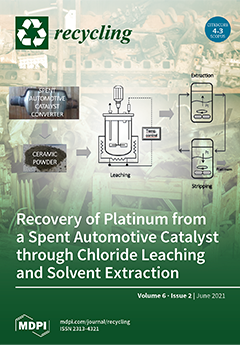The use of residual biomass of forest and/or agricultural origin is an increasingly common issue regarding the incorporation of materials that, until recently, were out of the typical raw material supply chains for the production of biomass pellets, mainly due to the quality
[...] Read more.
The use of residual biomass of forest and/or agricultural origin is an increasingly common issue regarding the incorporation of materials that, until recently, were out of the typical raw material supply chains for the production of biomass pellets, mainly due to the quality constraints that some of these materials present. The need to control the quality of biomass-derived fuels led to the development of standards, such as ENplus
®, to define the permitted limits for a set of parameters, such as the ash or alkali metal content. In the present study, samples of vine pruning, and ENplus
®-certified pellets were collected and characterized, and the results obtained were compared with the limits presented in the standard. The values presented from vine pruning approximated the values presented by
Pinus pinaster wood, the main raw material used in the production of certified pellets in Portugal, except for the values of ash, copper (Cu), and nitrogen (N) contents, with vine pruning being out of the qualifying limits for certification. However, it was found that the incorporation of up to 10% of biomass from vine pruning allowed the fulfillment of the requirements presented in the ENplus
® standard, indicating a path for the implementation of circular economy processes in the wine industry.
Full article





